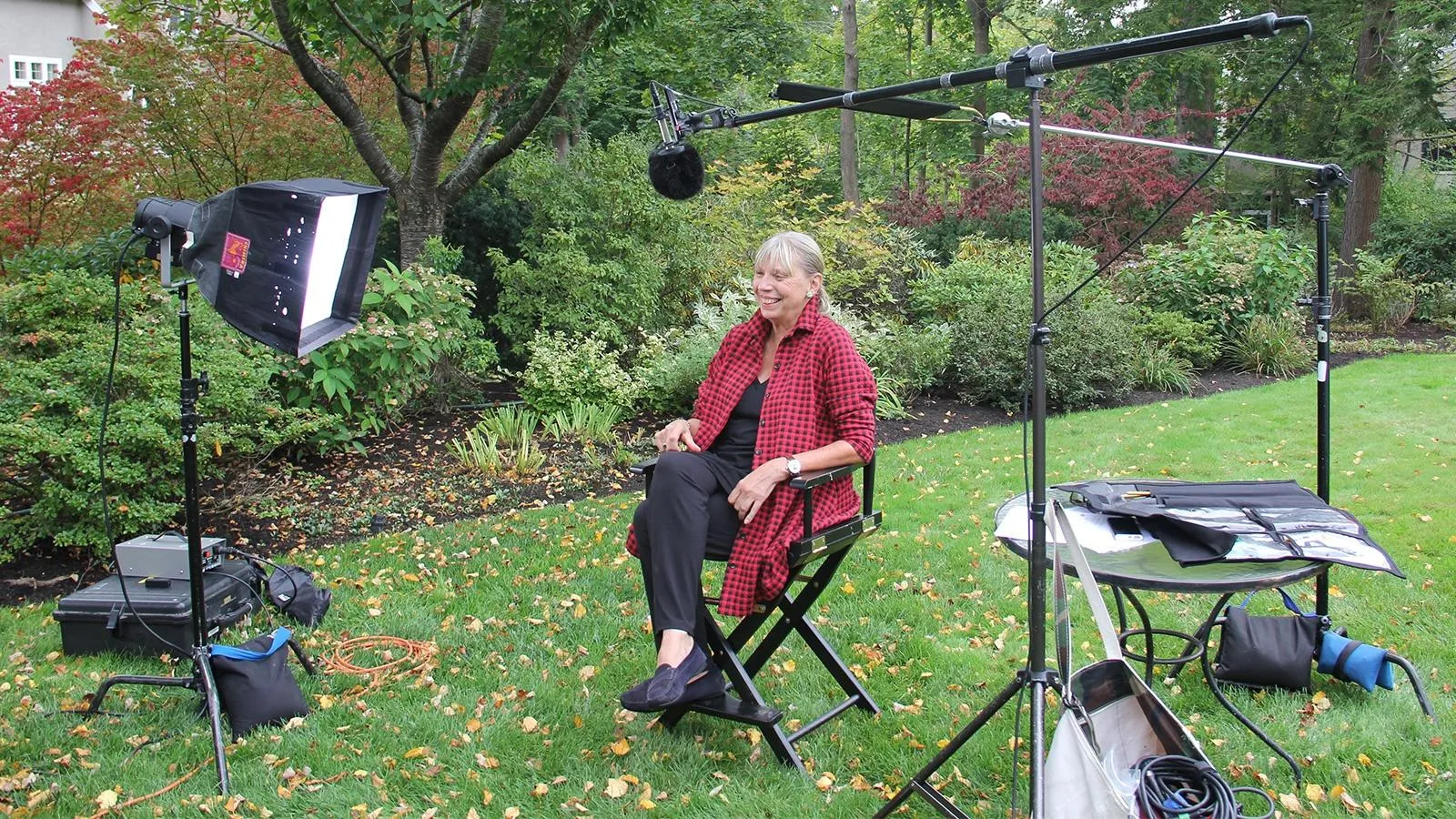Ken Gloss - 1976 Stanley Forman-signed “Soiling of Old Glory" Photo
HOST: From a legend of the funny pages to an icon of news photography. In the mid-1970s, racial desegregation efforts in Boston's public schools led to frequent protests by those who opposed the city's court-ordered busing policies. The unrest boiled over near City Hall one morning in April 1976, when a white teenager used an American flag to attack Ted Landsmark, a young Black lawyer who was passing through the plaza on his way to a meeting. News photographer Stanley Forman captured the moment indelibly in a Pulitzer Prize-winning photo that came to be known as "The Soiling of Old Glory."
APPRAISER: We're standing on Boston City Hall Plaza, Boston City Hall in the background, the plaza off to the right. We're right at the location where it happened. We were doing a ROADSHOW in Sarasota in April of 2018. I'm at the book table and autographs. In walks a man with a classic Boston photograph.
GUEST: My father was city editor at The Boston Herald. He assigned Stanley Forman to a photography shoot at a demonstration.
APPRAISER: The demonstration on City Hall Plaza in April of 1976 was planned. Louise Day Hicks from South Boston wanted to drum up resistance to integrating the schools. She gave a fiery speech at City Hall. She wanted to get a visceral reaction. These events weren't planned as an act of violence, but all over the city, there were acts of violence at almost all of these demonstrations. This picture of a Black man being grabbed by some of the white students, essentially being assaulted by the American flag, summed up everything of the civil rights, race relations in the United States. It's a photograph that, being from Boston, I had seen many, many times, and on top of that, I even knew the photographer well. Stanley Forman is a photojournalist, he worked for The Boston Herald, two-time Pulitzer Prize-winning photographer. Ted Landsmark is a distinguished Professor of Public Policy and Urban Affairs at Northeastern University, a very, very, well-known figure in the Civil Rights Movement, especially in the Boston area, but all over the country.
HOST: 45 years later, Stanley and Ted agreed to meet at the scene of the incident to talk with ROADSHOW about their recollections and that iconic photo.
LANDSMARK: Good to see you.
FORMAN: It’s really good to see you.
LANDSMARK: (laughs)
LANDSMARK: On that morning, I was not aware that there was any kind of demonstration going on. So when the kids turned the corner, I saw them and I thought, "Well, I can just keep walking and I'll walk right by them."
FORMAN: And all of a sudden, I looked down the plaza here, and I saw a Black man taking the turn and I just knew they were going to get him. It was like the Black men were going through the gauntlet and they were kicked, spit on, food was thrown, yelled at, and I just charged down the steps and ran over and I captured the image.
LANDSMARK: I would have to say that I was attacked almost exactly where I'm seated at this moment. One of the kids jumped up and hit me, which knocked my glasses off and broke my nose, and I stumbled, and what one sees in Stanley's photograph, um, is me as I am standing and being held by one of the young people, as the flag bearer is swinging the flag at me. And because it was swung, rather than used as a spear, I wasn't impaled. That would have had, been a very different outcome. And the flag itself missed me, probably by two inches—three inches at most. But the whole thing happened so quickly that it was really impossible for me to assess what was going on. And it wasn't until the crowd had then run off to their next destination, and I was left standing, just about right here, by myself, that I appreciated what had happened to me.
FORMAN: Back at the office, I developed the film, and they were very concerned. "What do we do with this picture?" They were really frightened of it. And there was a lot of conversation I wasn't a part of, but I knew it was going on, and they were saved because Howard Hughes died that day. And the top of page one, "Howard Hughes dead," and they were able to put the flag picture, "The Soiling of Old Glory," in the bottom half of the page one.
LANDSMARK: The photographs were used to identify the young people, so they were brought into custody very quickly after the incident. And none of them had criminal records prior to that incident. And so they were asked whether they would apologize, and I was asked whether I would accept their apology so that they wouldn't have a criminal record. From the beginning, I felt that they were not the culpable individuals, that it was the elected officials who had basically set them up for this who needed to be held accountable. And so I accepted their apologies and none of them served any time. I was anxious, actually, to meet the photographer, because you had won...
FORMAN: That was my, yeah.
LANDSMARK: ...the Pulitzer in the year before. I was certainly aware of your work.
FORMAN: Well, thank you, thank you.
LANDSMARK: And I've often joked since that if something horrible is going to happen to you, it's really helpful to have the previous year's Pulitzer Prize-winning photographer handy. Stanley, as the photographer of such an iconic image, and I are clearly bonded, and we have shared that moment, but also the legacy of that
moment, in many ways since then. We've been friends and colleagues for decades. I do have a copy of Stanley's photo, and it is in my office, so that the young students who come in will have some sense of some of the things that I have been through and some of the things I care about. I was rather surprised that "ANTIQUES ROADSHOW" reached out to me. I was sort of curious as to whether you were interested in talking about the photograph as an antique or talking about us as antiques.
FORMAN AND LANDSMARK: (both laugh)
FORMAN: Both!
FORMAN: I had no idea that my image was being appraised on the ANTIQUES ROADSHOW Ken Gloss contacted me-- I've known Ken forever.
APPRAISER: And I said, "Oh, Stanley, by the way, I appraised your photograph at the ANTIQUES ROADSHOW.” He asked me, "What did you appraise it at?"
APPRAISER: It's an absolutely fabulous photo. I have not seen many signed copies turn up, but I would say, conservatively, on a retail basis, $2,000 to $3,000.
GUEST: Really?
APPRAISER: Real... I mean, it's such an iconic photo-- it's fabulous.
GUEST: I appreciate it, thank you very much.
FORMAN: By the way, Ken, I didn't think you appraised it for enough.
LANDSMARK: (laughs)
FORMAN: But, you know, I'm not an appraiser, I'm me.
APPRAISER: This was in 2018, so it wasn't that long ago. I would say the price that I appraised it at is about the same. I've been doing the ANTIQUES ROADSHOW for over 20 years now, and there are a lot of items that come in that have been great, you really enjoy them. But this was one that, the minute I saw it, "I know this, I know the photographer!" I knew who Ted Landsmark was. I remember the event happening at the time. It's not the most valuable item I've ever had on the ROADSHOW, but it's probably the one that I've had most personal connection to.

$2,000 - $3,000 Retail
Ken Gloss
Featured In

episode
Extraordinary Finds 2
Learn what happens to more standout treasures after the ROADSHOW cameras stop rolling!
Understanding Our Appraisals
Placeholder





